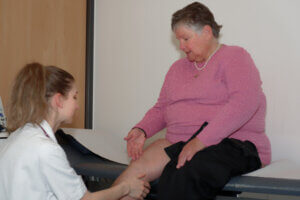Joint pain contributes to changes in body mass index (BMI)
The association between obesity and bodily pain in middle-aged and older adults
Bodily pain is related to obesity and high body mass index (BMI). However, most results are cross-sectional, and no longitudinal study of BMI and pain among adults older than 70 years have been conducted. Thus, the aim of this study was to explore the bi-directional association between bodily pain and BMI in middle-aged and older adults.
Three NEAR population studies: The Swedish Adoption/Twin Study of Aging (SATSA), Ageing in Women and Men: A Longitudinal Study of Gender Differences in Health Behavior and Health among Elderly (GENDER), and Origin of Variances in the Oldest-Old: Octogenarian Twins (OCTO-Twin), were used to explore this.
Joint pain contributes to changes in Body Mass Index (BMI)
In a sample of 1889 twins aged 40-93 years, a bidirectional association between BMI and joint pain was found. However, joint pain was more likely to contribute to BMI change than vice versa. Moreover, the results indicate that joint pain is related to heavier body mass until approximately 80 years of age. This is in line with pain leading to decreased physical activity and thus higher body fat. However, after 80 years of age, pain seems to lead to lower body mass. Also, some sex differences were found – the impact of BMI on joint pain occurs primarily before 70 years for women but after 70 years for men. In conclusion, joint pain impacts BMI changes among middle-aged and older adults, but the association may differ by age and sex. More longitudinal studies on older adults are needed to confirm these results.
Publication
Emery CF, Finkel D, Dahl Aslan AK. Bidirectional associations between body mass and bodily pain among middle-aged and older adults. Pain. 2022;163(10): 2061-2067. doi.org/10.1097/j.pain.0000000000002603.











